

Matt Campbell
2025 Porsche 911 Carrera T review
5 Days Ago
It's an MX, but not as we know it. Meet the MX-30, a quirky little SUV with sharp looks, a charming cabin, and a slightly underwhelming engine.
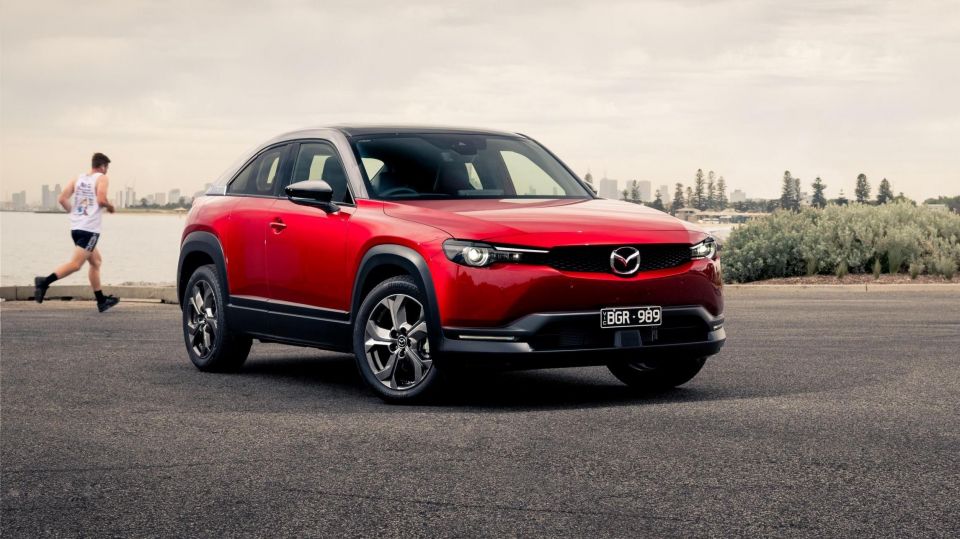
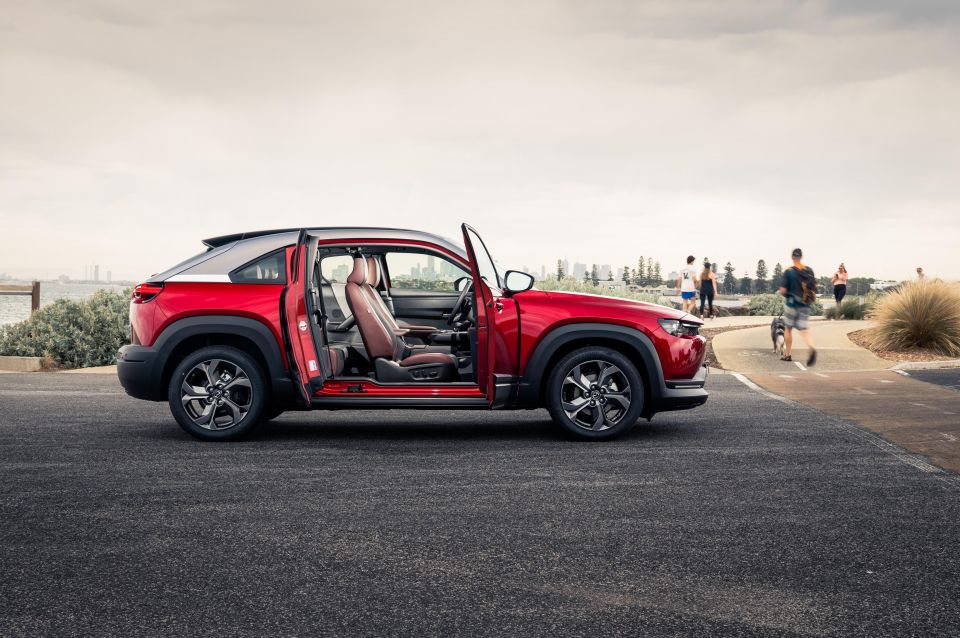

Contributor
New from
$33,990
excl. on-roads

Contributor
New from
$33,990
excl. on-roads


Contributor
New from
$33,990
excl. on-roads

Contributor
New from
$33,990
excl. on-roads
Quickly see how this car stacks up against its competition. Select any benchmark to see more details.
Where expert car reviews meet expert car buying – CarExpert gives you trusted advice, personalised service and real savings on your next new car.
The2021 Mazda MX-30 is a tough car to put into a box.
On paper it’s a small SUV that shares its bones with the CX-30, but it’s far from conventional.
It has funky Freestyle Doors (suicide doors to you and me), but it’s not a wildly expensive show car for the road.

It wears the same MX badging as the legendary MX-5 roadster, but it’s not a sports car.
It started life as a pure-electric concept car, but this particular model has a fairly conventional 2.0-litre petrol engine under the bonnet.
How does it all come together in the real world? Despite its slightly left-of-centre on-paper credentials, the MX-30 is (mostly) a quirky alternative to the Ford Puma and Toyota C-HR.
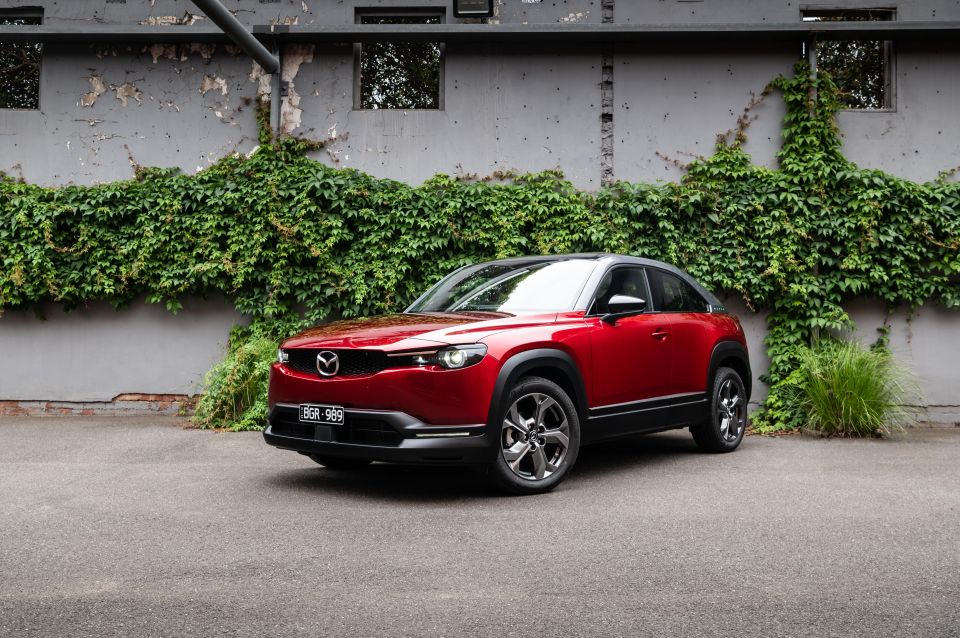
Pricing for the 2021 Mazda MX-30 starts at $33,990 before on-road costs for the entry-level G20e Evolve.
It then jumps to $36,490 before on-road costs for the G20e Touring, and tops out at $40,990 before on-roads for the G20e Astina.
That makes the entry-level model (which Mazda argues isn’t really a base model, but more on that to come) a gap-filler between the CX-30 G20 Pure and G20 Evolve, while the Astina slightly undercuts the CX-30 G25 Astina with its more powerful 2.5-litre engine.
As for rivals? Obviously, finding a suicide-doored rival for the MX-30 isn’t really an option. But there are plenty of style-focused small SUVs out there.
The Nissan Juke costs between $27,990 and $36,490 before on-roads, while the Ford Puma will set you back between $31,990 and $36,990 drive-away.
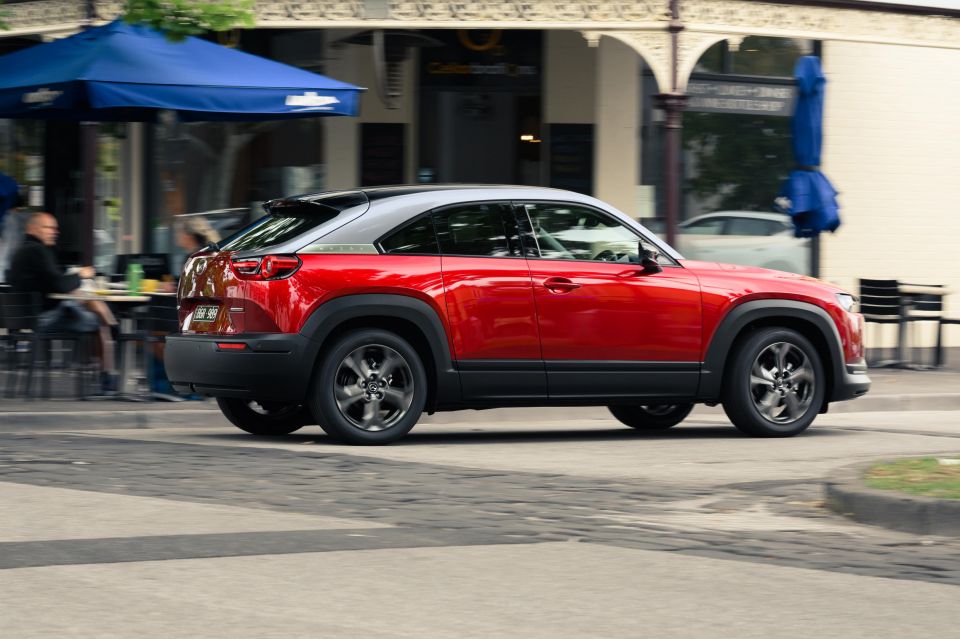
Standard equipment is generous even in the entry-level G20e Evolve, which rides on 18-inch alloy wheels as standard.
It gets automatic LED headlights, auto-folding mirrors, automatic wipers, an 8.8-inch infotainment screen, a 7.0-inch digital instrument binnacle, Apple CarPlay and Android Auto, an eight-speaker sound system, and satellite navigation.
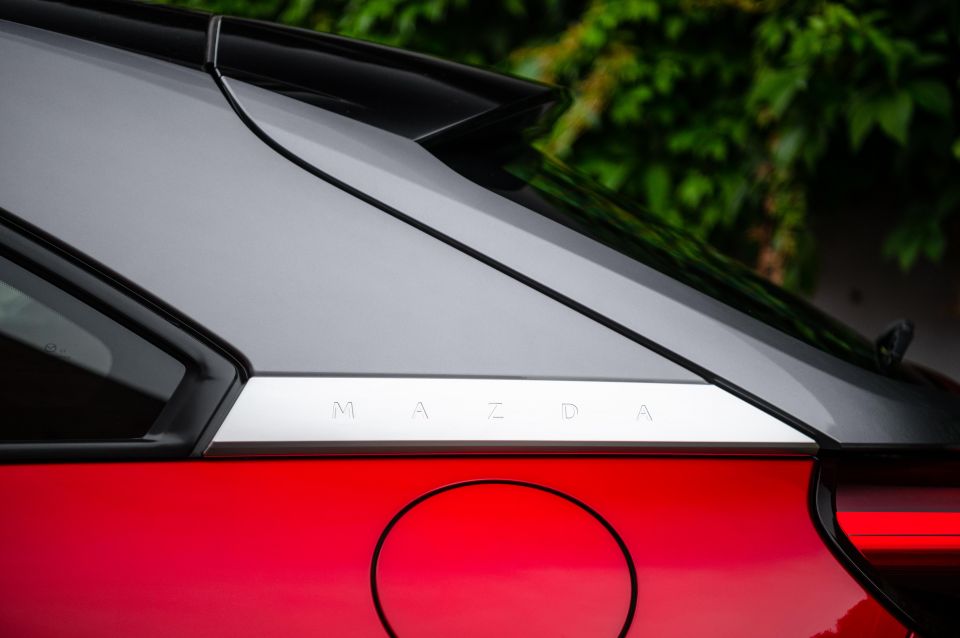
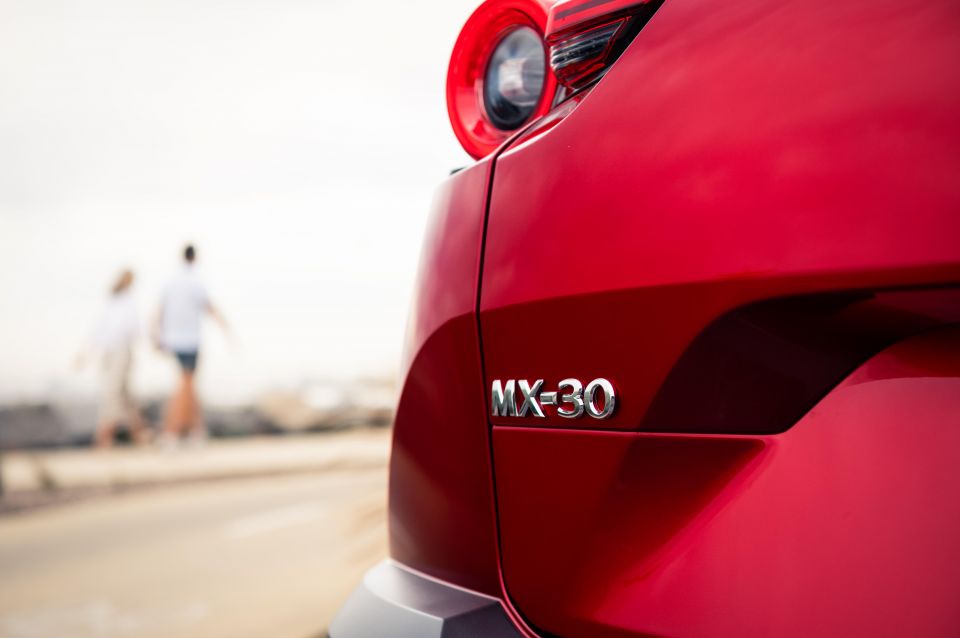
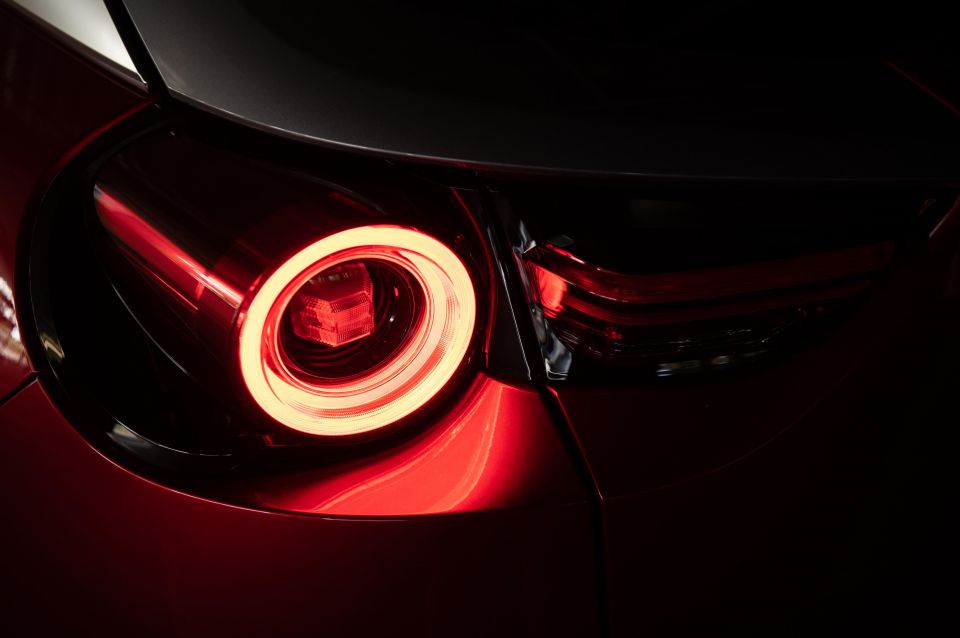
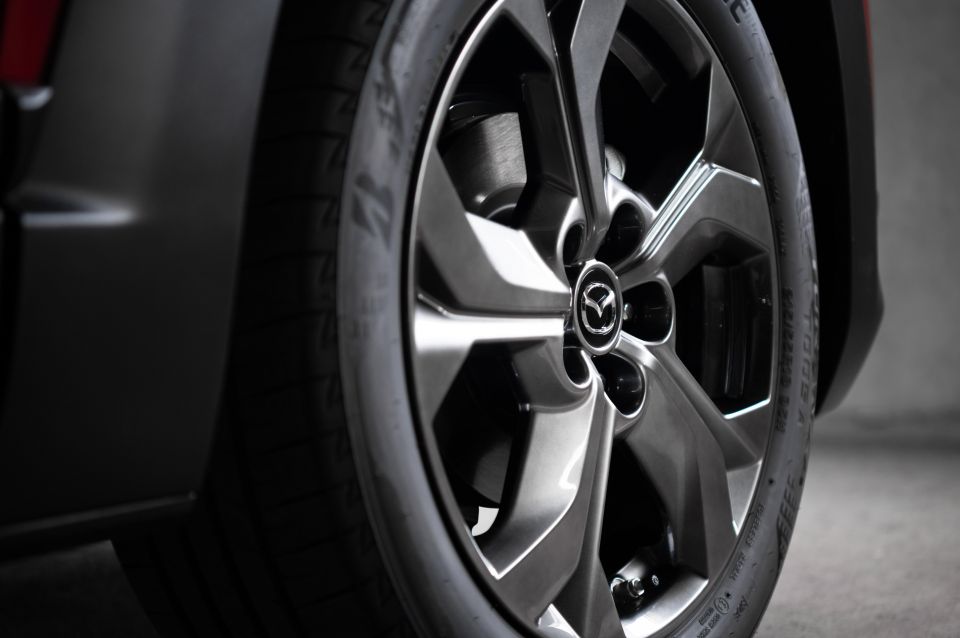
There’s also dual-zone climate, an auto-dimming rear-view mirror, an electric park brake with auto-hold, a leather-wrapped steering wheel and gear shifter, and paddle shifters. The seats are trimmed in grey and black cloth.
Moving up to the G20e Touring adds keyless entry, an auto-dimming driver’s exterior mirror with memory, leather-style Maztex seat trim pieces, powered driver’s seat, and illuminated vanity mirrors.
Both the Evolve and Touring can be equipped with the Vision Technology ($1500) pack, which brings a surround-view monitor, cruising and traffic support, driver attention monitoring, front cross-traffic alert, and front parking sensors.
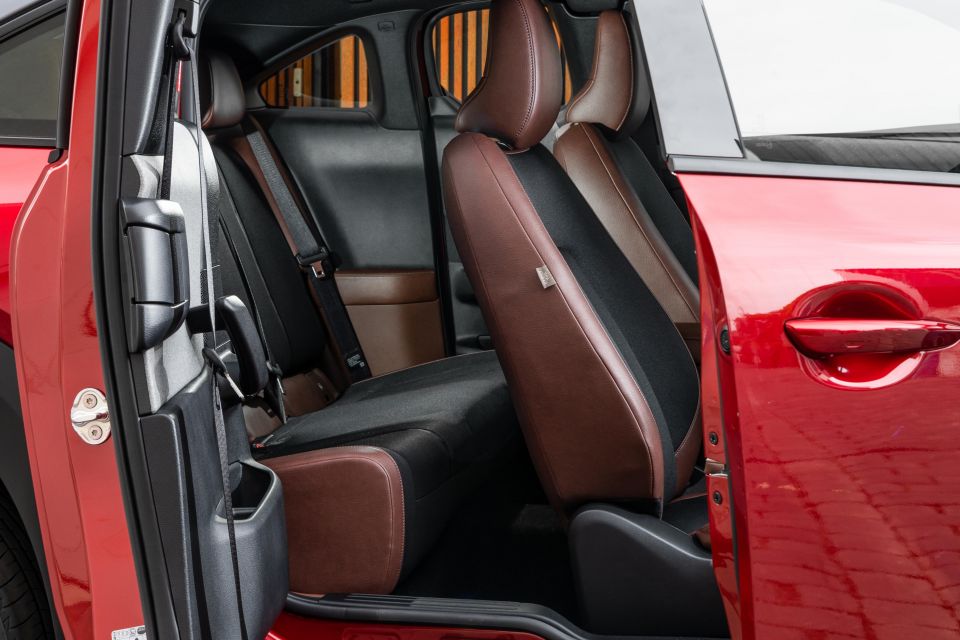
The range-topping MX-30 G20e Astina adds bright-finish 18-inch wheels, heated front seats and a heated steering wheel, a sunroof, vintage brown seat highlights, a surround-view camera, adaptive LED headlights, driver monitoring, front cross-traffic alert, and front parking sensors.
A trio of special tri-tone paint finishes is offered.
Ceramic Grey metallic with a black roof and grey pillars is $995, Soul Red Crystal metallic with a black roof and grey pillars is $1490, and Polymetal Grey metallic with a black roof and silver pillars is $1490.
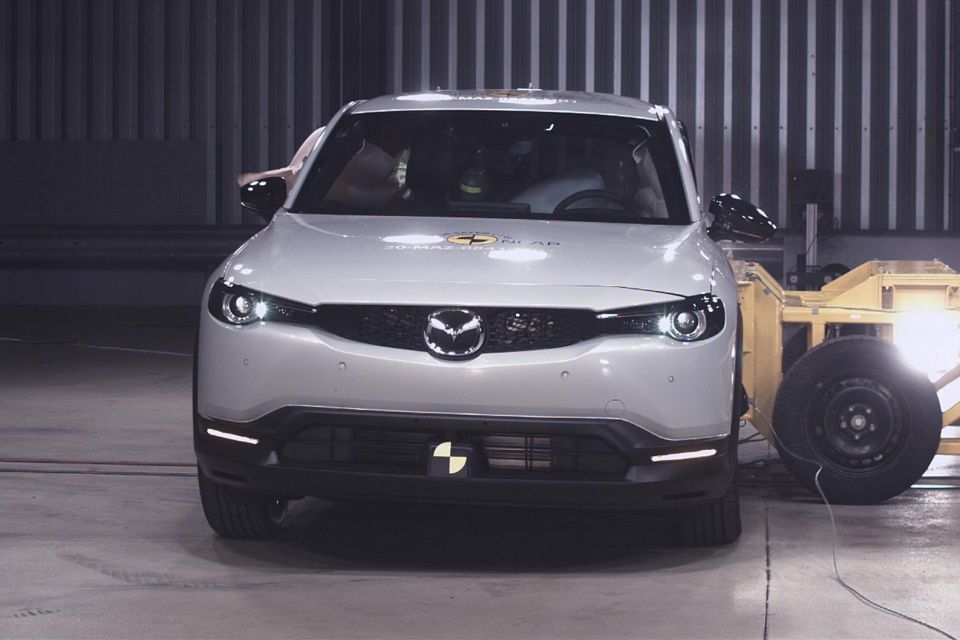
The 2021 Mazda MX-30 has a five-star ANCAP safety rating based on testing carried out by Euro NCAP in 2020.
It scored 91 per cent for adult occupant protection, 87 per cent for child occupant protection, 68 per cent for vulnerable road user protection, and 74 per cent for safety assist.
Atop 10 airbags, the MX-30 features the following active safety equipment:
Opting for the Astina or the Vision Technology package on lower models brings:
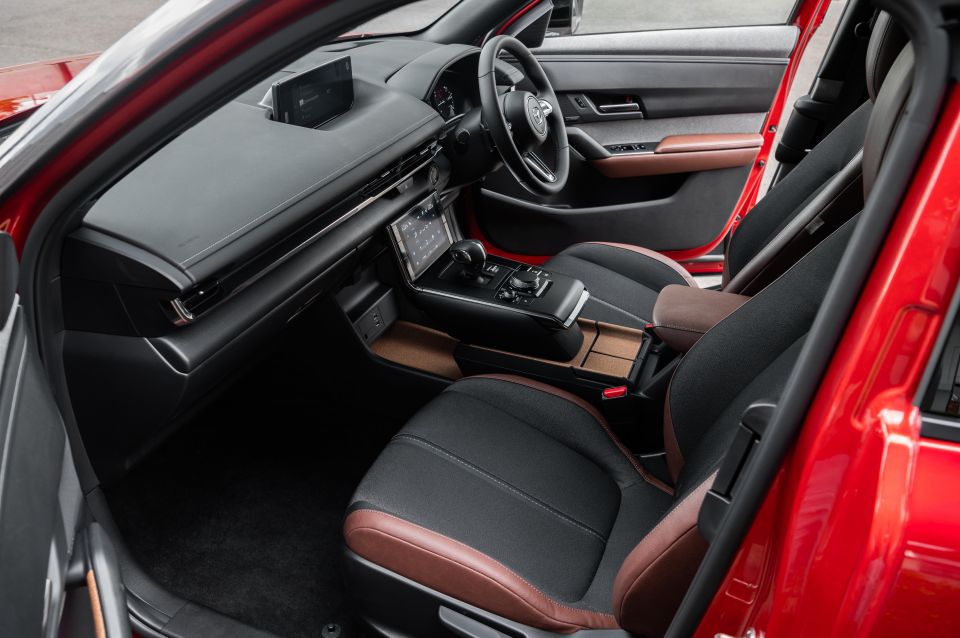
Most modern Mazda interiors are lovely, but the MX-30 takes things to another level with some really cool materials and design touches.
Even the base seats are trimmed in tasteful tweed-like material, while higher-spec cars feature more leather-like trim called Maztex. There’s even cork on the centre console, in a nod to Mazda’s early days as Toyo Cork Kogyo in Hiroshima.
All models feature a floating touchscreen for climate controls, flanked by hard buttons for temperature control. It looks upmarket, and is among the easiest touch-based climate control setups to use.
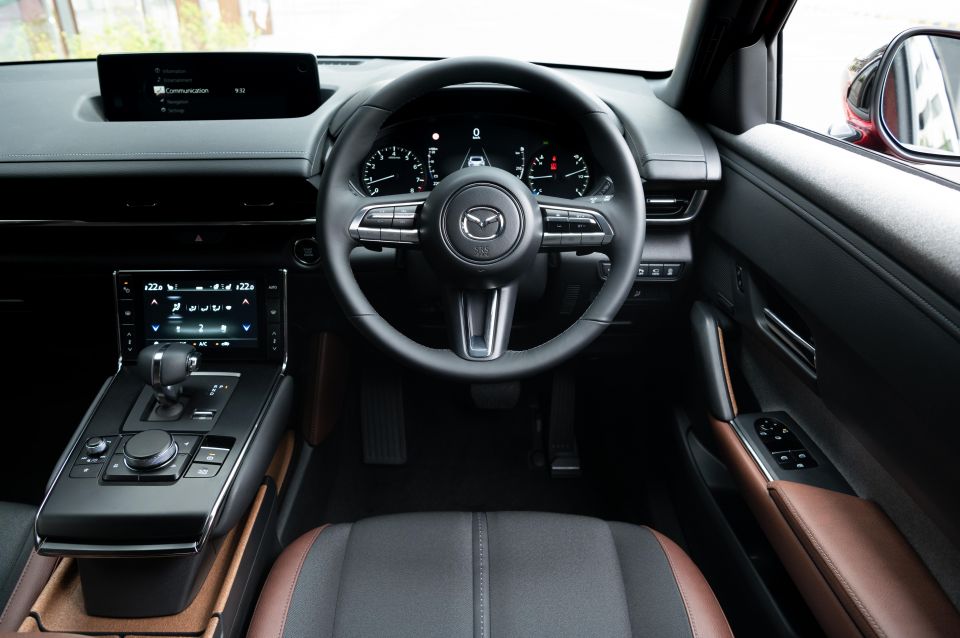
There’s a massive storage space behind it, complete with USB ports and room for a handbag or other odds and ends.
Although the materials are unique, the infotainment is typical of most modern Mazdas. There’s an 8.8-inch infotainment screen nestled atop the dashboard, controlled with a rotary dial on the transmission tunnel.
It’s a huge step forward from the old MZD Connect system, with slick graphics and snappy responses. Apple CarPlay and Android Auto are both included, as is factory satellite navigation.
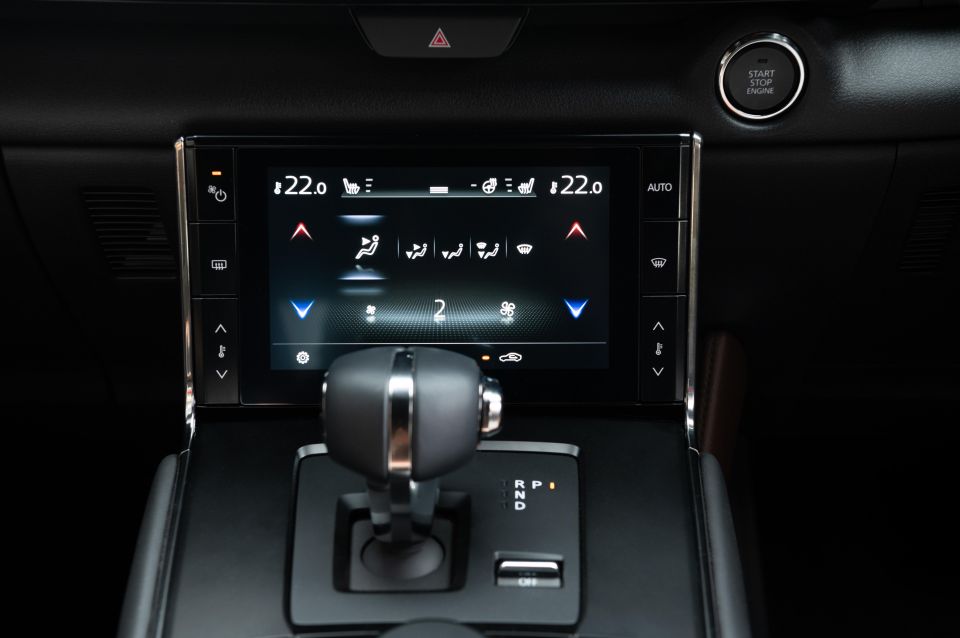
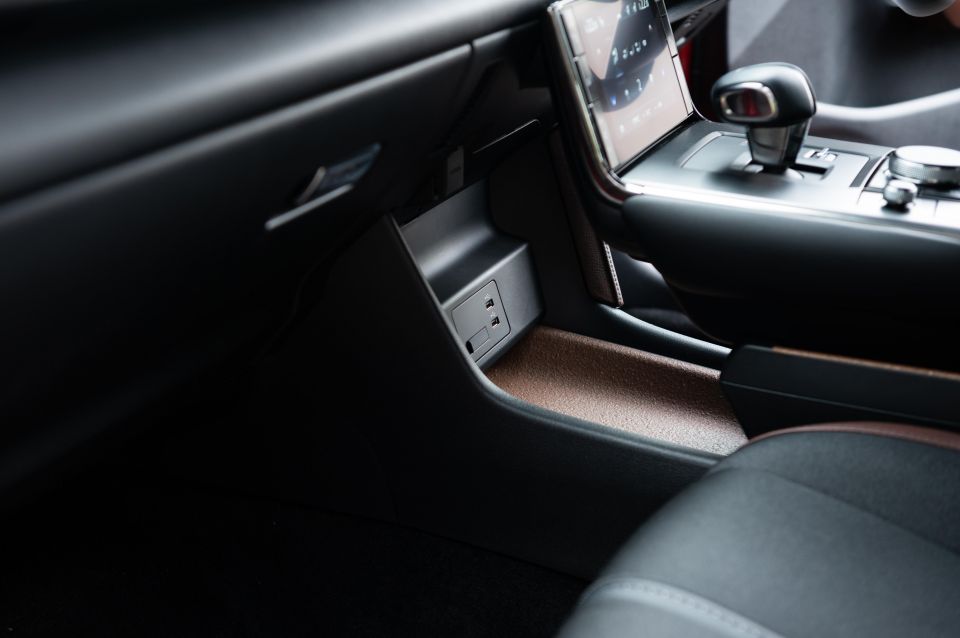
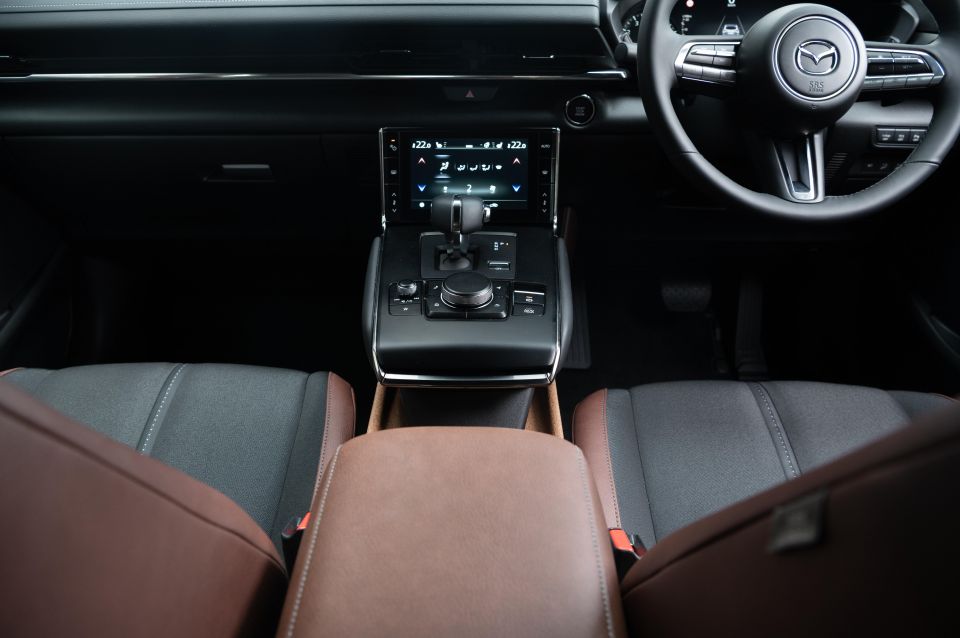
The driver and passenger sit low, with acres of adjustment on offer for leggy people, and the seats themselves match their neat design with plenty of support for long drives.
Even with a sunroof there’s acres of headroom, which is rarely the case in small SUVs.
Things aren’t quite so rosy in the back seats, which are accessed through those funky, reverse-opening Freestyle Doors.
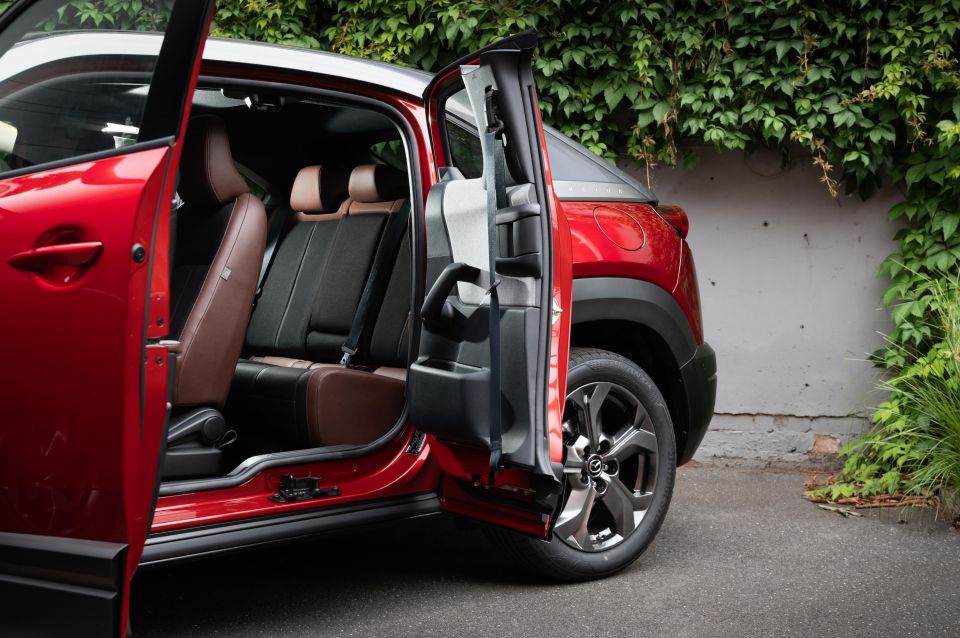
Getting in is easy, but once there legroom is limited. Mazda has experience with these doors – the RX-8 featured them – but even with a focus on improving outward visibility the windows are quite small back there.
Headroom is surprisingly good in spite of the sloping roofline, but realistically it’s a space for children or shorter people on short trips.
Boot space is 311L under that curved boot lid, and the rear seats fold down 60/40.
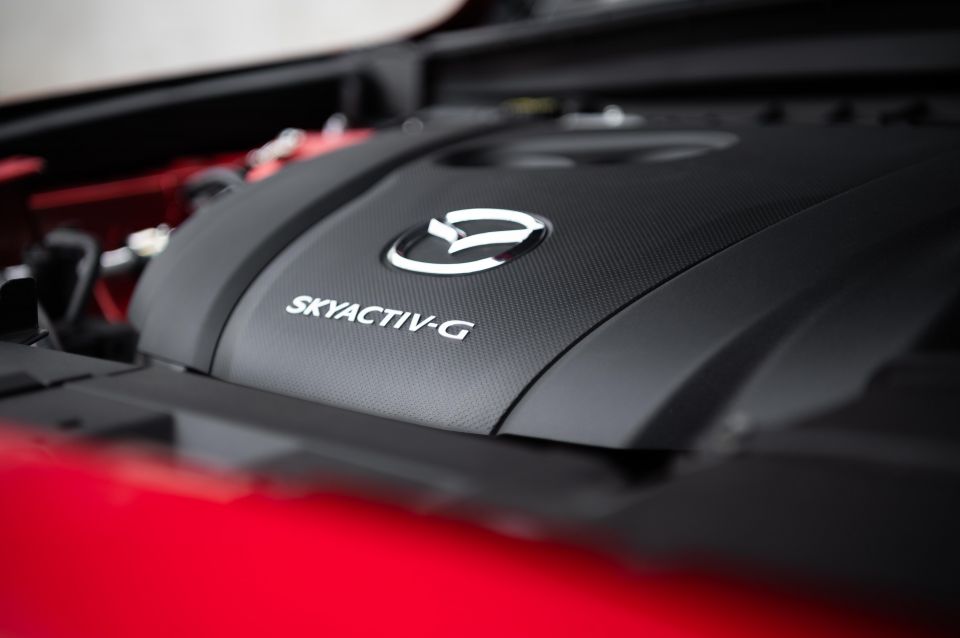
Power in the MX-30 M Hybrid comes from a 2.0-litre, four-cylinder petrol engine backed by a 24V mild-hybrid system.
Peak power is 114kW at 6000rpm, peak torque is 200Nm at 4000rpm. It’s front-wheel drive only, mated to a six-speed automatic transmission. The 24V system is on the mild side, even as mild-hybrid setups go.
The integrated starter generator (ISG) allows automatic start/stop to engage earlier and fire more smoothly, and can provide a performance boost when the driver need. It also assists with braking by harvesting energy when the driver lifts off the throttle.
Claimed fuel economy is 6.4L/100km on the combined cycle.
Later in 2021, Mazda Australia will also launch the MX-30 EV with a 107kW/271Nm electric motor and 35.5kWh battery, good for approximately 200km of driving on the tougher WLTP test cycle.
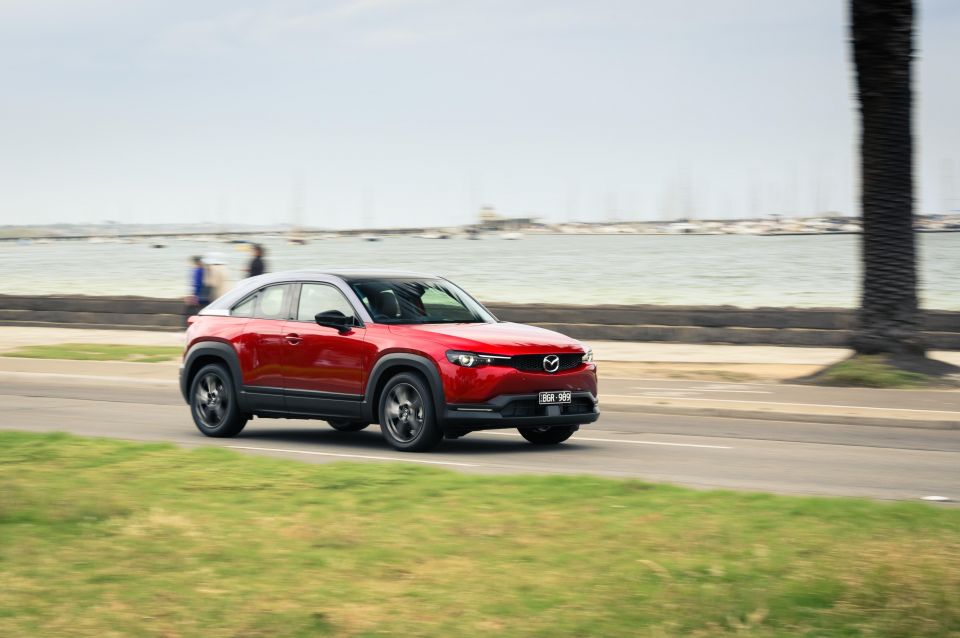
There’s plenty of Mazda Experimental in the MX-30, but you won’t find it in the way the M Hybrid drives.
For starters, performance from the 2.0-litre engine is never more than adequate. With no turbocharger and very, very mild assistance from the mild hybrid system, it really needs to be worked hard to make anything more than slow progress.
It’s relatively smooth and quiet when you aren’t in a hurry, shuffling through the gears without ever really making its presence felt.
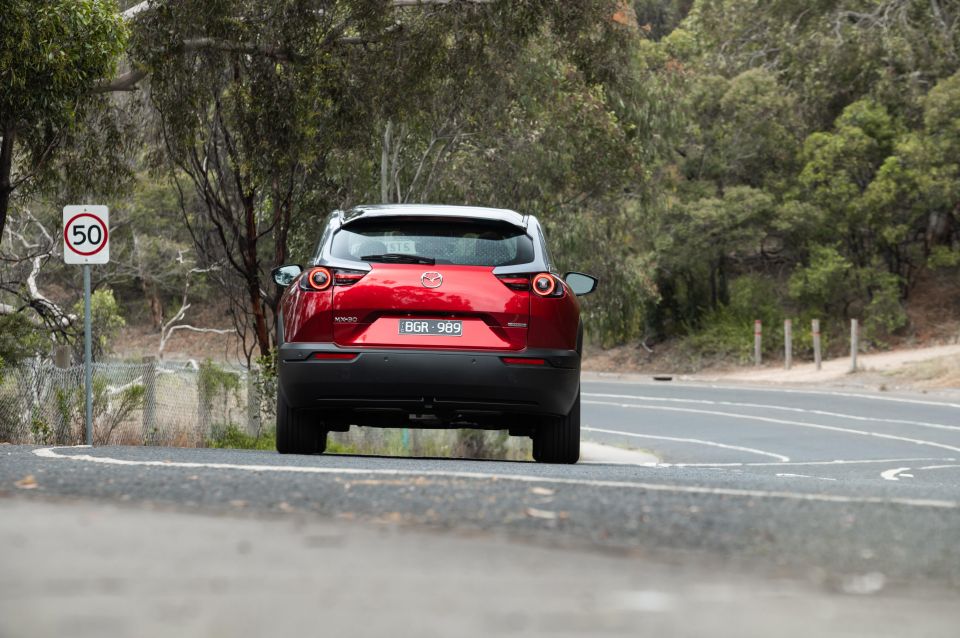
Where expert car reviews meet expert car buying – CarExpert gives you trusted advice, personalised service and real savings on your next new car.
Lean on the accelerator harder though and it needs to go chasing the redline, which goes some way to undermining the refinement.
Our launch route was mostly made up of highway cruising so it’s hard to judge how consistently the start/stop system works, but it activated smoothly and cut the engine at around 20km/h a few times. Consider that a tick.
It’s a shame the engine is so light on for grunt, because the chassis beneath it is able to handle much more.
The steering is relatively light, but it’s nice and direct. Coupled with the car’s compact footprint and a smart suspension tune, it makes for a compact SUV that can really dance when you need it to.
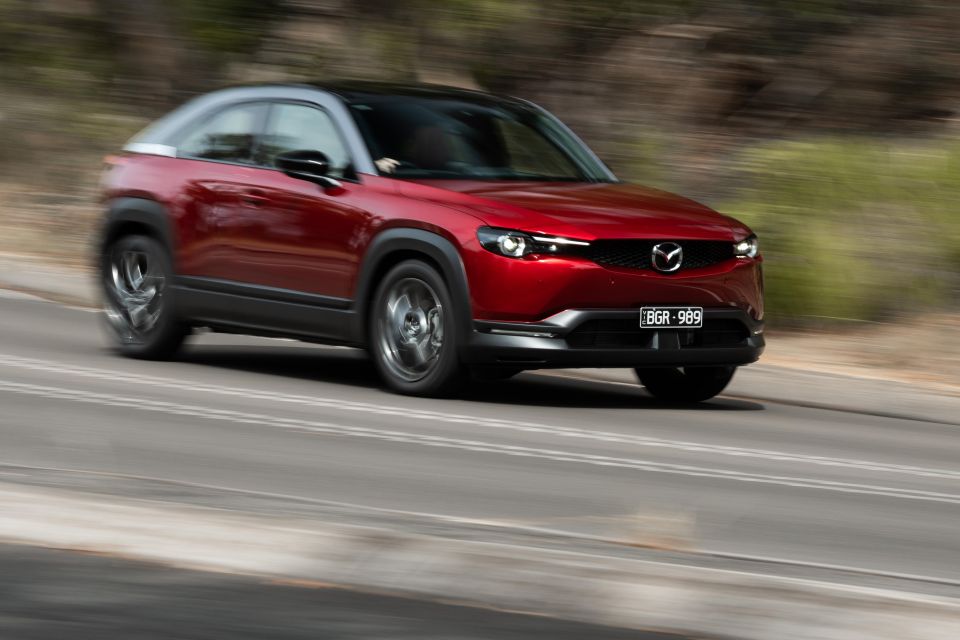
It isn’t quite Ford Puma sharp, but there’s plenty there for keen drivers.
Lower the pace and what really stands out is the refinement. The ride is very good on patchy backroads, soaking up bumps with a languid feel not common in small cars on big wheels.
Save for the hard-working engine, there’s very little wind or road noise to ruin the serenity.
We’ll have to reserve judgement on how the MX-30 acquits itself in the urban jungle until we’ve spent some more time behind the wheel but, save for the blind spot caused by the chunky C-pillars, it’s hard to imagine it struggling in the city.
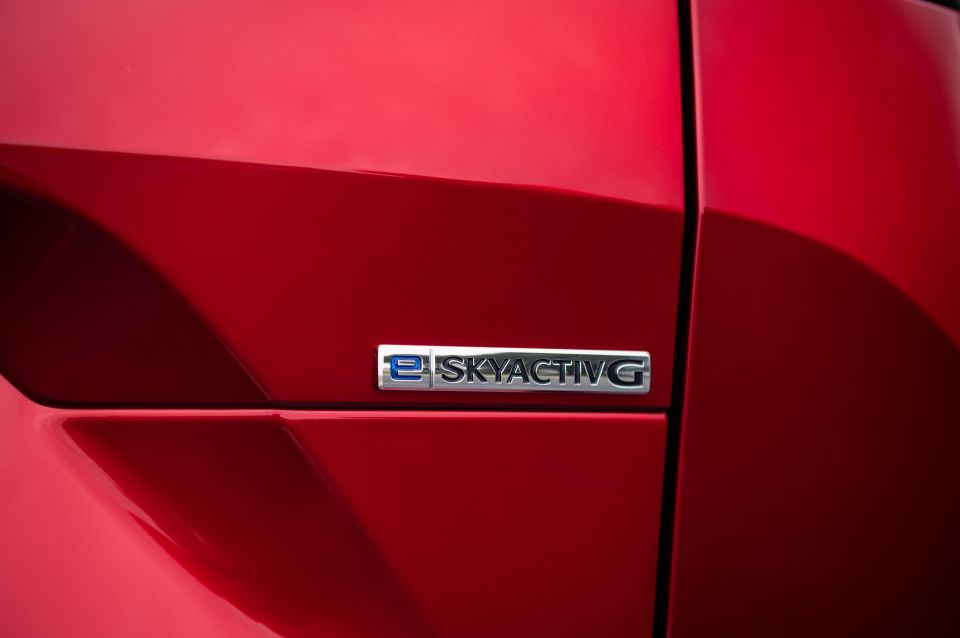
The MX-30 is backed by a five-year, unlimited-kilometre warranty.
The first five years of servicing costs a combined $1942, and maintenance is required every 12 months or 10,000km.

In a lot of ways, the MX-30 is impressive.
Mazda deserves serious credit for letting its engineers loose on a scissor-doored SUV that, on paper at least, goes head-to-head with the more conventional Ford Puma and Toyota C-HR.
The interior is a lovely place to spend time, and there’s something very cool about the subtle nods to Mazda before it was a carmaker.

It’s a shame the 2.0-litre petrol engine doesn’t have more punch. Its strained performance and barely-there electrification don’t do the rest of the car justice, even though they’re adequate alongside what rivals offer.
As it sits at the moment, the MX-30 is a cool-looking crossover for people who like the idea of pushing the envelope but can’t quite commit.
We’ll have to wait and see whether the electric model transforms the MX-30 from an interesting crossover into something a bit more innovative.
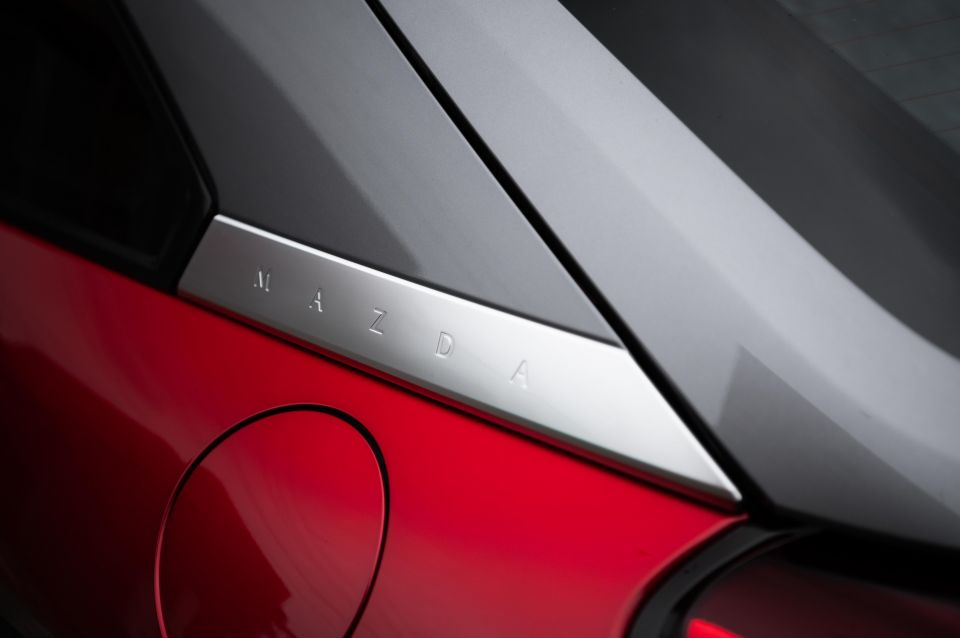
Click the images for the full gallery
Where expert car reviews meet expert car buying – CarExpert gives you trusted advice, personalised service and real savings on your next new car.
Scott Collie is an automotive journalist based in Melbourne, Australia. Scott studied journalism at RMIT University and, after a lifelong obsession with everything automotive, started covering the car industry shortly afterwards. He has a passion for travel, and is an avid Melbourne Demons supporter.


Matt Campbell
5 Days Ago


James Wong
4 Days Ago


Max Davies
3 Days Ago


Josh Nevett
2 Days Ago


Josh Nevett
1 Day Ago
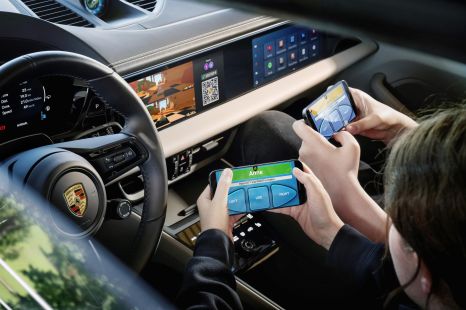

James Wong
18 Hours Ago